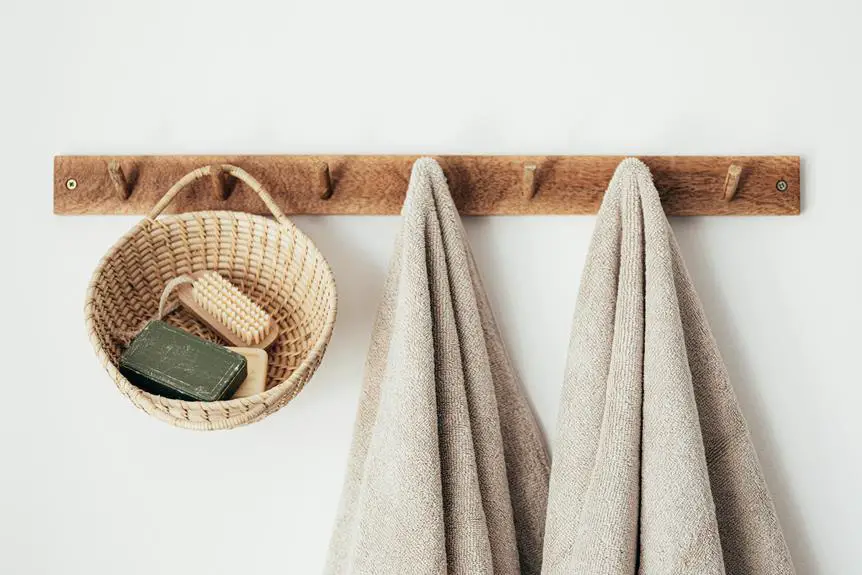If you want to protect your fabrics from stains and spills, incorporating Scotchgard into your care routine is a smart move. You'll find that the process isn't complicated, but it does require a few key steps to ensure effectiveness. Start by preparing your fabrics properly, and then apply Scotchgard in thin, even layers for the best results. But there's more to maintaining that protective barrier than just the initial application. Understanding the nuances of upkeep can make a significant difference in your fabric's longevity. Curious about how to keep that barrier intact?
Table of Contents
Key Takeaways
- Begin by preparing fabrics: vacuum, spot clean stains, and ensure they are clean and dry before applying Scotchgard.
- Apply Scotchgard to upholstery, carpets, and clothing using multiple thin coats for optimal protection.
- Allow treated fabrics to dry completely after application to ensure the protective barrier forms effectively.
- Maintain your fabrics by cleaning spills immediately and vacuuming regularly to prolong Scotchgard's protective qualities.
Understanding Scotchgard Products
Scotchgard products are designed to protect your fabrics from stains and spills, making them easier to clean and maintain. These innovative treatments create a protective barrier that repels liquids and prevents dirt from adhering to the fibers. Whether you're dealing with upholstery, carpets, or clothing, Scotchgard helps keep your fabrics looking fresh and new.
When you apply Scotchgard, you're not just adding a layer of protection; you're also enhancing the longevity of your fabrics. The products work by allowing you to wipe away spills before they can set in, which is especially useful for homes with kids or pets. Plus, you can enjoy peace of mind knowing your favorite items are safeguarded against everyday mishaps.
It's essential to choose the right Scotchgard product for your specific needs. They come in various formulations—some are designed for upholstery, while others are tailored for heavy-duty fabrics or delicate materials. Make sure to read the labels carefully to ensure you're selecting the best option.
Preparing Your Fabrics
Before applying any protective treatment, make sure your fabrics are clean and dry to ensure the best results. This step is crucial for Scotchgard to bond effectively with your materials.
Follow these simple steps to prepare your fabrics:
- Vacuum or Shake Off Debris: Remove dust, dirt, and loose particles that can interfere with the treatment. Use a vacuum for larger items like upholstery or rugs, and shake smaller items like cushions or curtains.
- Spot Clean Stains: Address any stains before applying Scotchgard. Use a mild detergent and a clean cloth to gently blot the area. Avoid rubbing, as this can spread the stain. Let the fabric dry completely before proceeding.
- Wash Fabrics if Applicable: If your fabric is machine washable, run it through a cycle to remove any lingering dirt or odors. Follow the care label instructions and allow the fabric to air dry.
Applying Scotchgard Effectively
Applying Scotchgard correctly ensures your fabrics stay protected and looking fresh for longer. To get the best results, follow these simple steps.
First, make sure your fabric is clean and dry. Shake the can well before use, and hold it about 6 to 8 inches away from the surface. Lightly spray an even coat across the fabric, ensuring you cover all areas without saturating it. For best results, apply multiple thin coats rather than one thick layer.
Here's a quick reference guide to help you during the application:
| Step | Action |
|---|---|
| 1. Fabric Preparation | Ensure it's clean and completely dry. |
| 2. Shake the Can | Shake well to mix contents thoroughly. |
| 3. Spray Distance | Hold can 6-8 inches away from the fabric. |
| 4. Apply Evenly | Use multiple thin coats for optimal protection. |
Once you've applied Scotchgard, allow it to dry thoroughly before using or cleaning the fabric. This ensures maximum protection, keeping your items looking good and lasting longer.
Maintenance Tips for Longevity
To keep your fabrics protected and looking great, regular maintenance is key. By following these simple tips, you can ensure that your Scotchgard-treated items remain in top condition for years to come.
- Clean Spills Immediately: Don't let spills sit. Blot them gently with a clean cloth to absorb excess liquid. This helps prevent stains from setting in, keeping your fabrics fresh.
- Regular Vacuuming: Dust and debris can wear down fabric fibers over time. Vacuum your upholstered furniture and carpets weekly to remove dirt and prolong the life of your Scotchgard treatment.
- Reapply Scotchgard as Needed: Depending on usage, you might need to reapply Scotchgard every 6-12 months. Check the manufacturer's instructions and consider the wear and tear of your fabrics. A fresh application will renew the protective barrier and keep your items looking vibrant.
Common Uses for Scotchgard
Maintaining your fabrics isn't just about care; it's also about knowing where Scotchgard can be effectively used to enhance protection and longevity in various applications.
You can start by treating upholstery in your living room. Scotchgard works wonders on sofas, chairs, and cushions, keeping them safe from spills and stains. It's particularly useful in households with kids or pets, as it repels liquid and makes cleaning easier.
Next, consider your carpets and rugs. A Scotchgard application creates a barrier against dirt and grime, helping to maintain their appearance over time.
Don't forget about outerwear, either. Jackets, coats, and shoes benefit from Scotchgard's water and stain-resistant properties, ensuring you stay dry and clean even in inclement weather.
If you have outdoor furniture, using Scotchgard can protect those fabrics from moisture and UV damage, prolonging their life.
Finally, think about your textiles, like curtains and table linens. Applying Scotchgard adds an extra layer of protection, so you can enjoy your decor without worrying about accidental spills.
Frequently Asked Questions
Can I Use Scotchgard on Outdoor Fabrics?
Yes, you can use Scotchgard on outdoor fabrics. It helps repel water and stains, extending the life of your furniture and gear. Just apply it according to the instructions for best results.
Is Scotchgard Safe for Pets and Children?
Scotchgard's generally safe for pets and children once it's fully dried. However, always check product labels and ensure proper ventilation during application. It's best to keep them away until the treated area is completely dry.
How Long Does Scotchgard Protection Last?
Scotchgard protection typically lasts for several months, depending on factors like fabric type and usage. You can extend its effectiveness by avoiding heavy cleaning and reapplying as needed, ensuring your fabrics stay protected longer.
Can I Wash Fabrics After Applying Scotchgard?
You shouldn't wash fabrics right after applying Scotchgard. It's best to let the treatment cure for at least 24 hours. After that, you can wash them without losing the protective benefits.
Does Scotchgard Change the Color of My Fabric?
Scotchgard typically doesn't change the color of your fabric, but it's always best to test a small, inconspicuous area first. This way, you can ensure the fabric maintains its original hue after application.
- How Does Ring Spun Cotton Affect Garment Fit and Shape Retention? - August 13, 2024
- What Are the Challenges in Producing Ring Spun Cotton? - August 13, 2024
- Is Ring Spun Cotton Suitable for Plus-Size Clothing? - August 13, 2024







